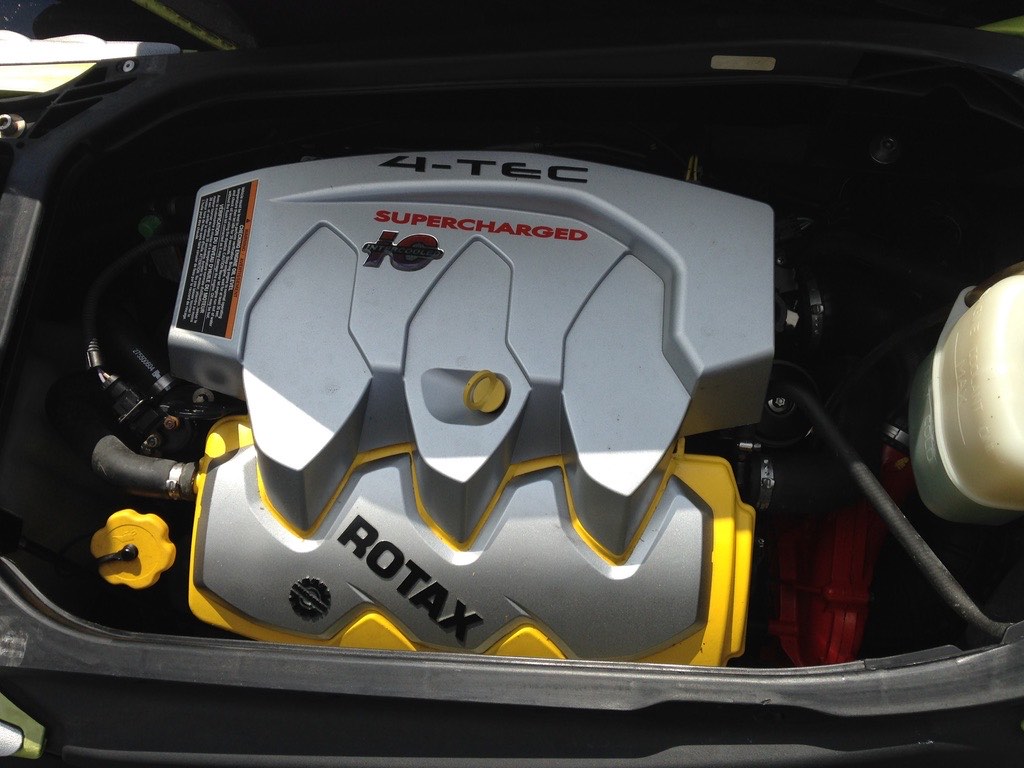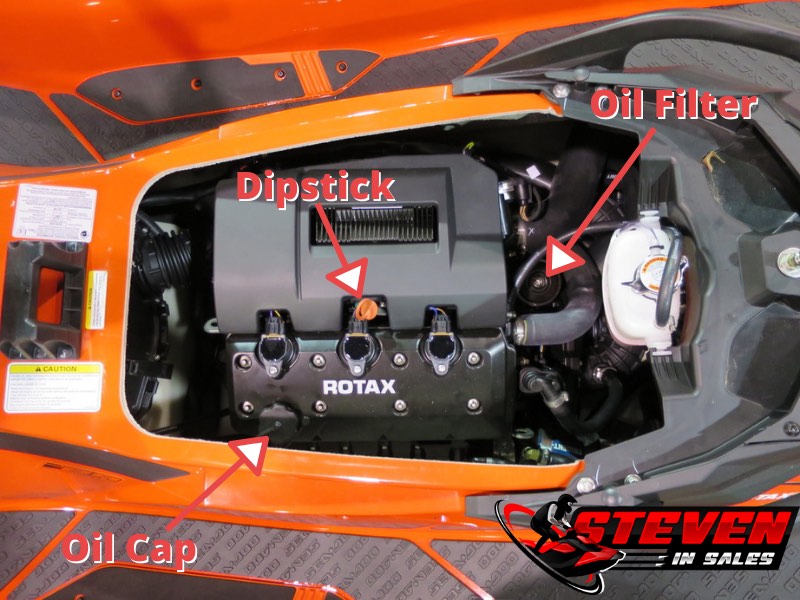Part of the fun of having a watercraft is going fast! While every machine is fast, if you ask me, if you want to be the fastest, you’ll need a model that has a supercharger. The 3 major brands all have them for their fastest crafts.
The problem is that all brands handle care differently! You also get a lot of confusing information from the manufacturer and “experts” in the field. Some of the questions you’ll have are like…
- “When is the correct interval?”
- “Should you follow the manufacturer’s advice?”
- “Are there supercharger that are actually “worry free“?”
I created this post to go over your options and answer some questions people have about Sea-Doo and their superchargers.
What Is A Supercharger?
A supercharger in a jet ski is a device designed to increase air pressure supplied to the engine, enhancing power output without enlarging the engine. It compresses air before it enters the combustion chamber, allowing MORE air & fuel mixture for a powerful explosion in each cylinder. This process boosts horsepower and torque, enabling higher speeds, improved acceleration, and better overall performance.
Unlike turbochargers powered by exhaust gases, superchargers are directly driven by the engine, typically by gears. This direct connection provides immediate response and power increase, suitable for watercraft like jet skis requiring rapid acceleration and high performance.
However, increased power results in higher fuel consumption and engine wear, making servicing crucial for longevity and reliability. For Sea-Doo owners, there are additional considerations due to issues in early models.
What are The Signs Your supercharger Is Going Bad?
Decreasing RPMs
If you notice your RPMs start to decrease 100’s of RPMs over a short period of time, then something is wrong.
Below 7,600 RPMs
For reference, aim for around 8k engine RPMs. Below 7,600 RPMs indicates improper function or a boost leak, while under 7k RPMs signals a non-operational supercharger needing immediate repair!!!
Note that higher temperatures, elevation, and humidity may affect RPMs. Additionally, watercraft under 10 hours are in “break-in” mode with limited RPMs.
Tip: It’s best you run premium gasoline in supercharged jet skis. A loss of power could come from bad or low octane gas. Also, bad spark plugs can be an issue, I recommend changing spark plugs at least once a year.
The Reasons Sea-Doo Superchargers Fail
A supercharger is a normal wear and tear item and needs to be rebuilt or replaced at specific intervals.
Things that can make a supercharger fail quicker?
- Not doing regular oil changes (once a year or every 50 hours, whichever comes first).
- Jumping waves and NOT letting go of the throttle.
- Going full throttle all the time and never letting off. (This is very bad if the engine is new)
Washers
The biggest problem for the superchargers was the washers failing.
They have really improved these washers in 2012, but this shifted the issue to the bearing failing instead.
While they improved the washers, the bearings never saw much change, and is why so many people stick to rebuilding every “100 hours” for 1503 4-TEC engines.
Rebuild Intervals
1. What Sea-Doo Says?
This only applies to supercharged models. So if you have a Spark, GTI, or 170HP engine or less, this doesn’t apply to you!
I got this information from Sea-Doo’s own owner’s manual section here.
- 2003 to 2011 – If the supercharger has never been rebuilt or rebuilt before 2009, get it done now. If you had it rebuilt between 2009 and 2011, then get it rebuilt before 100 hours. If rebuilt after 2012, rebuild it every 200 hours.
- 2012 to 2017 1503 4-TEC engines – Rebuild at 200 hours, irrespective of the number of years.
- 2016 and up ACE engines – Inspect it every 200 hours, irrespective of the number of years.
1503 4-TEC engines – Any engine that is 185HP, 215HP, 255HP, or 260HP.
ACE Engines – Any engine that is 230HP, 300HP, or made in 2018 and newer.
How To Know Your HP? – Sea-Doo puts the HP (Horsepower) rating in the model’s name. So if you have a GTR 215, it’s a 215HP engine, A GTX Limited 230 would be a 230HP, and an RXP-X 300 would be 300HP. (Learn more about horsepower in our post here.)
Note: The 200-hour rebuild kits came to out in 2012. So if you had it rebuilt after 2012, you’d have the 200-hour kit.
2. “Playing It Safe”
Any 1503 4-TEC engines – Rebuild every 100 hours.
ACE Engines – Inspect every 200 hours.
Some say on the 1503 4-TEC engines to do it every 100 hours or 2 years, whichever comes first, but I focus on the 100 hours more.
Most people use their jet ski for about 30 hours a year! So, in 3 years, you’ll have around 100 hours. If you ride a lot, you might hit 100 hours in just 2 years. In either case, it’s the same thing!
Buying A Used Supercharged Watercraft, Watch For These Years
Before 2018
If buying a used PWC and the previous owner doesn’t know when the last rebuild on a 1503 4-TEC engine was done, prioritize getting it rebuilt.
Even if the previous owner has proof of a rebuild, if it’s over 2 years old, consider getting it rebuilt again. Riding habits are unknown, making this a strong negotiating point and providing peace of mind.
2018 or Newer
If you’re buying a 2018 and newer, then it has the maintenance-free supercharger, and you have the dealership inspect it every 200 hours.
Maintenance-Free Meaning
Sea-Doo’s “maintenance-free” claim means that when the supercharger fails, you simply replace it.
The dealership checks it at 200 hours, and if it’s faulty, you buy a new one.
The Height Of The Problem
The issue peaked before 2009, but notably improved after 2012.
Starting in 2012, Sea-Doo implemented improved washers and recommended rebuilds every 200 hours. All superchargers rebuilt after 2012 received the updated 200-hour kit.
Jumping Waves
The people who were the most affected were the type to jump waves and not let go of the throttle.
Manufacturers advise against jumping waves with jet skis!!!
When the pump is out of the water, there’s no load, causing the throttle to spin the supercharger too fast.
Rebuild costs
- A rebuild can cost anywhere from $500 to $1,500, depending on your local dealer’s labor costs.
- If you replace one, it can cost anywhere from $1,500 to $2,500, depending on your local dealer.
Shop around since every dealership varies.
Also, consider local jet ski repair shops.
If you lack mechanical skills, many places accept shipped superchargers for rebuilding.
Avoid self-rebuilding due to the need for specialized tools and the risk of causing significant damage if done incorrectly.
Naturally Aspirated Engine?
A naturally aspirated (NA) engine doesn’t force air in, eliminating the problems discussed in this post.
For simplicity and cost-effectiveness, I prefer NA engines. They’re ideal for newcomers to the sport, still providing speed—many exceed 50MPH from the factory. Most new riders never exceed 40MPH, making NA engines suitable.
Unless you aim to be the fastest, choose the NA option. They’re also more fuel-efficient.
Regarding conversions, NO, you can’t easily add a charger or turbo to a naturally aspirated PWC engine. It requires extensive modifications beyond simply mounting one on.
Keep A Log Book
The more powerful the engine, the more essential it is to maintain a work log.
I’m surprised by how many people neglect simple note-taking. A basic notebook with dates and work details is sufficient. This significantly boosts resale value, with the legitimacy of logbooks evident in their worn pages.
Keeping notes aids in troubleshooting by recalling recent actions. Many repair shops offer warranties lasting 7 to 90 days on technician repairs, a valuable reference in your logbook.
While note-taking apps on phones are convenient, pen and paper suffice. Dealerships may not always retain records due to computer failures, emphasizing the importance of maintaining your own logs.



Good information. I just had my 2004 SeaDoo 4-tec supercharge tuned up and tested. It’s not been used since 2010. It’s always been in fresh water. We now live in SC in the lowcountry and we want to explore the channels with it. I will have the supercharger checked before doing that. For now, we are testing it at Lake Cumberland (Kentucky) where we used it 2004 to 2010. It has 148 houirs so I feel it still has plenty of life.
Ohio Navy Jim